Lady's slipper: description, appearance and care
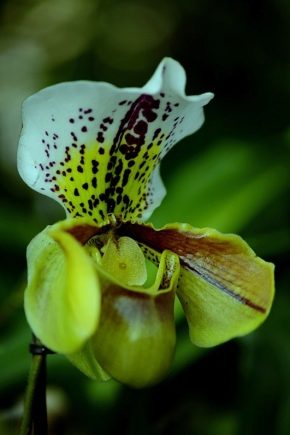
In nature, you can find many exotic and incredibly beautiful plants. These include orchids, in particular, the lady's slipper. This culture stands out for its high decorative qualities, due to which it is successfully cultivated not only in the open field, but also at home.
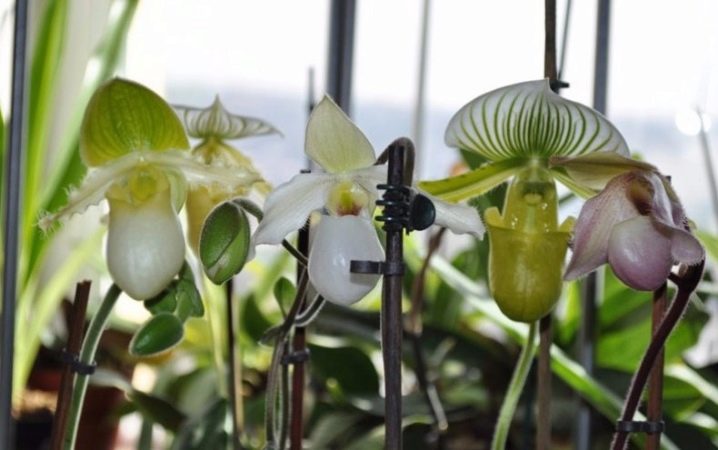
Appearance and habitat
Orchids are represented in nature by a large variety of varieties, each of which is unique and gorgeous in its appearance. As for such genera of orchids as pafiopedilum, cypripedium and phragmipedium, many gardeners and florists agree that it is rather difficult for these species to compete in beauty. All of them are united under the general name of the lady's slipper. Their beauty is due to the extraordinary appearance of the flowers themselves, about which there are quite a few legends and beliefs.
Orchid flowers of this species resemble a small slipper; it is to this feature that the appearance of the second name of the culture - the lady's slipper - is due.
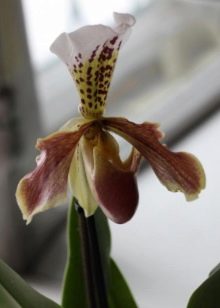
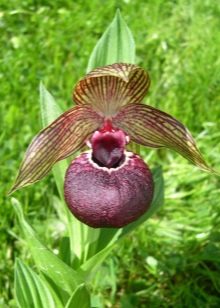
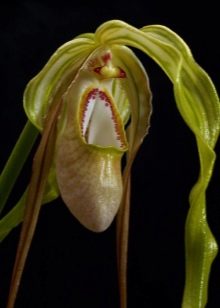
In its natural environment, the flower can be found in forests where the culture actively grows and develops between the trunks and branches of trees, as well as on stumps... Basically, the orchid grows in Asian countries, India and the Philippines. In the family of this genus, there are about fifty varieties of culture, therefore, it would seem, such a rare plant can be found in Europe and even in its native spaces, although the homeland of the orchid is very far away. In Russia, the papiopedilum family is represented by five species, which mainly grow in Primorye.
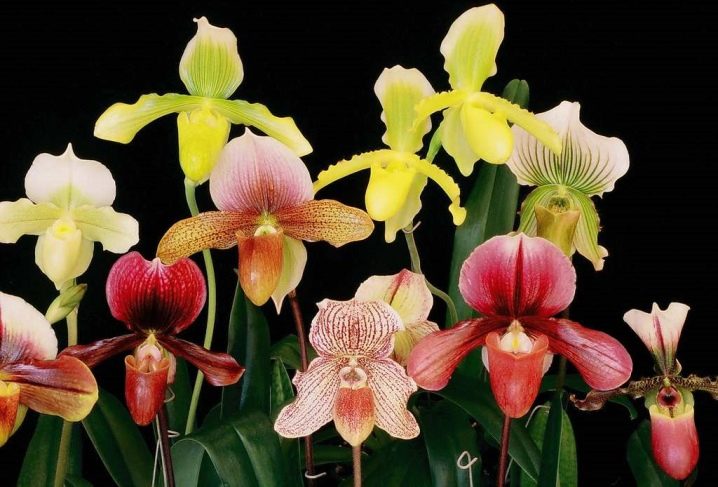
It is worth noting that the culture belongs to the few and rare flowers listed in the Red Book.
According to the description of the species growing in our country, in nature you can find an orchid, the flowering of which occurs no earlier than 18-20 years of age. Some representatives of an exotic culture secrete a specific juice with an extremely unpleasant aroma.
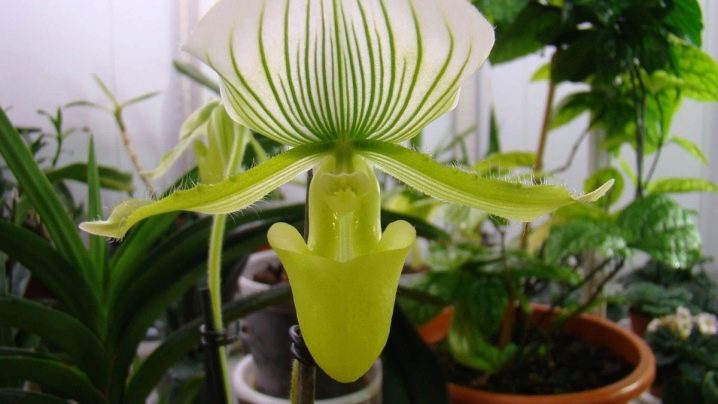
Large-flowered orchid belongs to the group of perennials, a feature of the plant is very well developed and powerful root system... The stem of the orchid is erect; in most varieties, the flowers reach sizes from 5 to 8 centimeters.
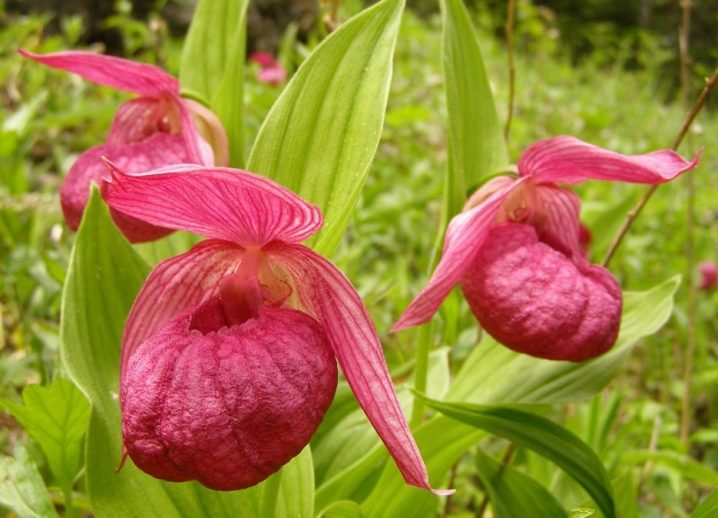
As for the color, it is predominantly purple, with rich veins, but this is far from the only color in which the orchid flowers will be painted. In nature, there are pink, blue, white and yellow crops, spotted and speckled orchids.
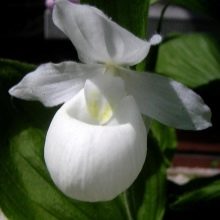
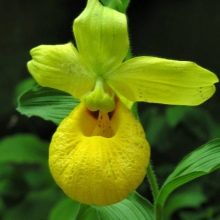
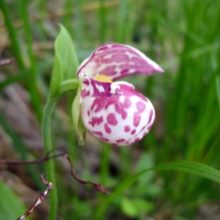
The external structural features of the flower itself suggest the presence of three stamens, one of which will be located directly at the "entrance" to the bud. The unusual structure allows moisture, which is also a bait for insects, to accumulate inside. Thanks to the oblong petal, the orchid is very well pollinated.
This peculiar lip contains nectar, but it can be accessed through a single and very narrow passage. In it, the insect pollinates the flower with pollen from neighboring plants with its little body, at the same time collecting a fresh portion from the stigma, which it will take with it. Thus, pollination of the culture occurs in its natural environment.
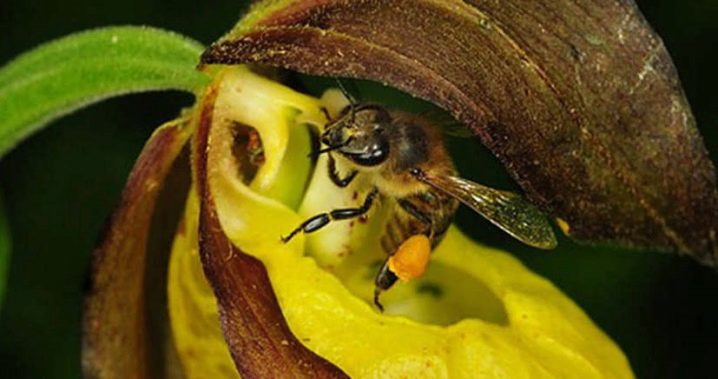
With the arrival of autumn, the aerial part of the orchid dies off, however, the root system at the same time fully retains its vitality.Horticultural crops are usually covered with a layer of mulch for insulation.
After the orchid is pollinated, its flowering will continue for several more days. As a rule, the phase of flowering of the lady's shoe falls on May-June.... The fruit of an orchid is a box with seeds of a very small size and weight, so they can move freely through the air. Despite the fact that one flower has a lot of seeds, no more than 2-3 pieces will germinate from a million, provided that it gets into a favorable environment. This is due to the lack of nutrient reserves in the seed material of the culture for independent development.
In nature, the emergence of a new plant is possible only due to the symbiosis of the seed material with the mycelium located in the soil. If the seed enters the root system of the fungus, then the plant will begin its development under the soil, which will continue for 4-5 years, after which leaves will begin to form on the culture, and only after almost two decades will the plant reach the flowering age.

Views
According to various estimates in the family of the lady's shoe, there are from 50 to 80 different types of culture. Plants are classified according to flowering time and flower type. So, today you can find crops, the flowering phase of which falls at the beginning of spring, as well as orchids blooming in the summer-autumn season. As for the type of flowers, there are single-flowered cropsrevealing one or two flowers on a peduncle, and multi-flowered plants with more than three flowers per inflorescence. Also, a tropical beauty can have "Revolving" type of bud formation, which assumes the development of a new flower only in the place of an already faded one.
Today, among flower growers, these types of lady's shoe are especially in demand.
Acaulescent
Culture it stands out with a pleasant aroma from flowers that have a pastel color. An orchid with a white corolla and pink petals looks the most beautiful.
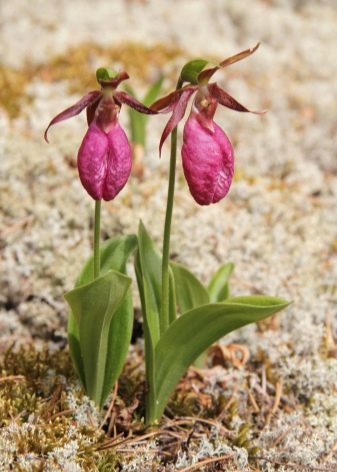

Ramhead
Among the features of this species, it is worth highlighting brindle color of buds and the flower shape characteristic of the family.
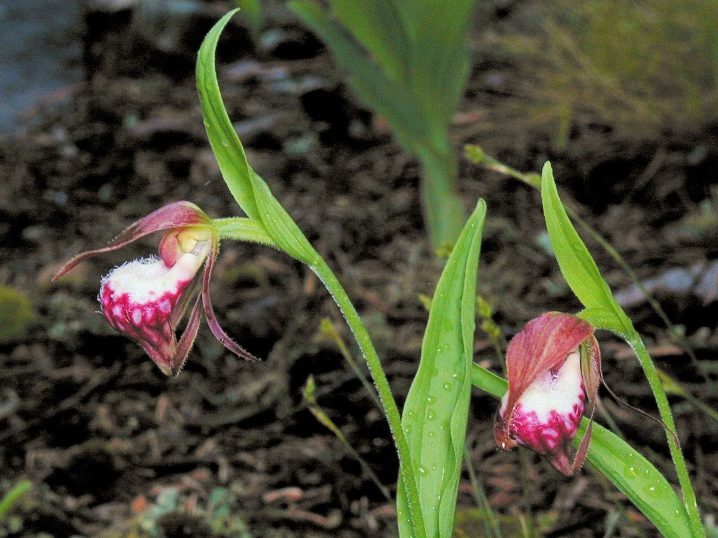
California
The petals of the blossoming flower take bowl-shaped. At the same time, the color of crops of this species approaches creamy white.

Snow white
Despite its name, the orchid has rich burgundy color of petalswho are crowned with a beautiful crown.
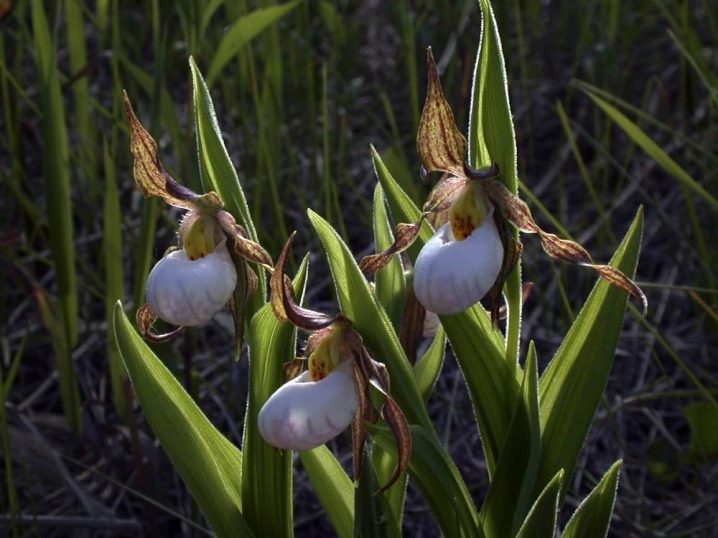
Tuberous
The view stands out for its size, inflorescences are straight, with a delicate color and brownish veins on the petals.

Real
Such a plant blooms purple flowers, while burgundy shades prevail in the color of the foliage.
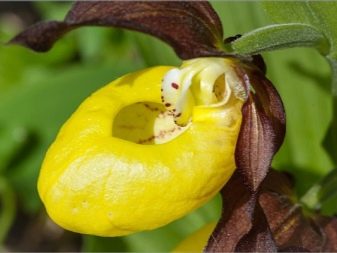

Charming
The greenish-orange color of the flowers of this plant distinguishes the culture among the available varieties. This species throws out a peduncle containing one flower.
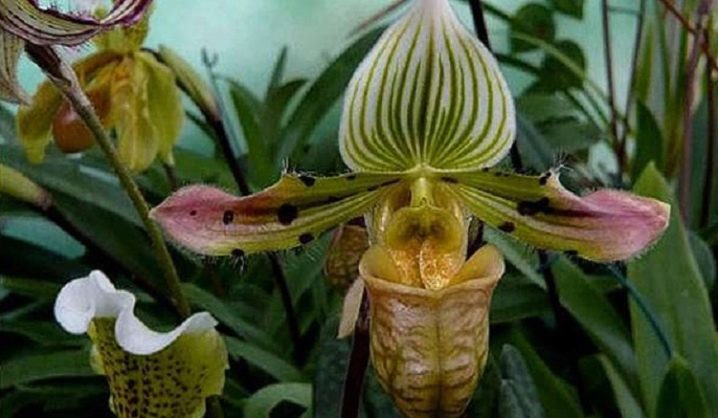
Lawrence Orchid
Culture color with large buds, the diameter of which in the opened state reaches 30 centimeters. The upper petal turns pale white, and the sepals have red edges, while the swollen lip will be brownish red.
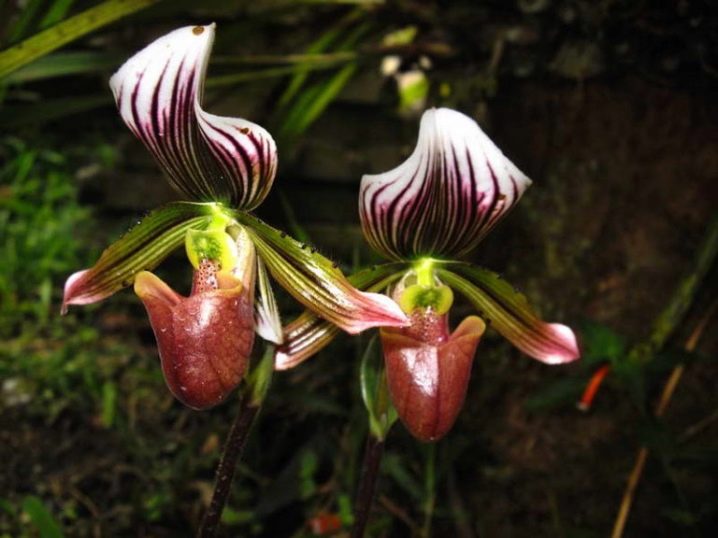
Pretty
Culture blooms white orchids with pink-raspberry splashes... The foliage is spotty and can be up to 15 centimeters long.
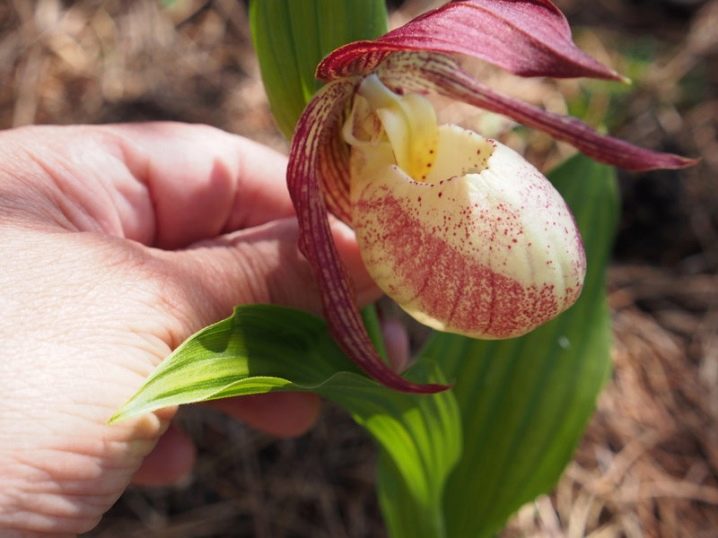
Bearded
One flower is formed on the peduncles, whose color is close to purple-red. White will be dominant on the top petal.
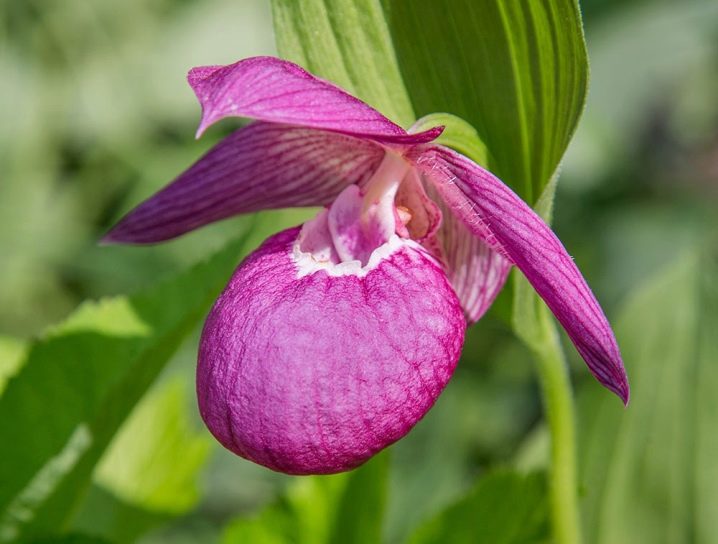
Apricot
The lady's slipper of this species blooms with yellow flowers, the middle of which will be colored orange. There is a variety with white flowers.
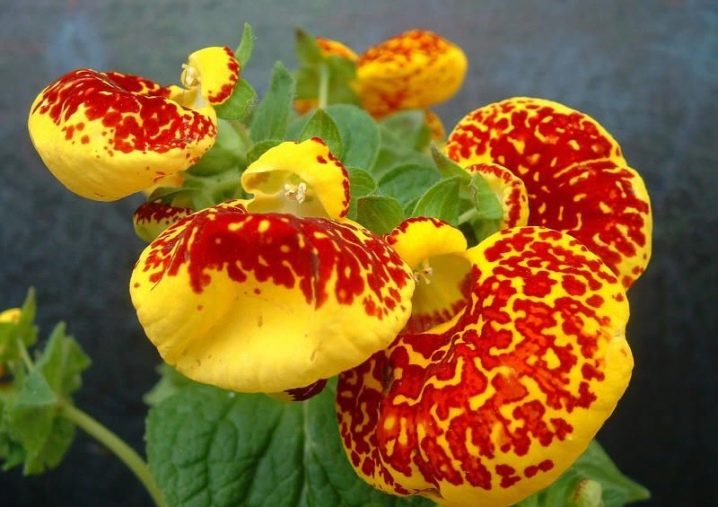
Landing
To grow this crop, you will need to pay attention to the root system of the orchid. She is quite vulnerable, so you should purchase a plant for growing in pots.
The lady's slipper will be able to bloom only in the fifth year of life, so there is no point in buying younger seedlings.

As a rule, crops for sale are planted in pots with soil that will be suitable only for temporary use during transportation. Florists recommend replanting the orchid as soon as possible after purchase, or rooting it in the garden.
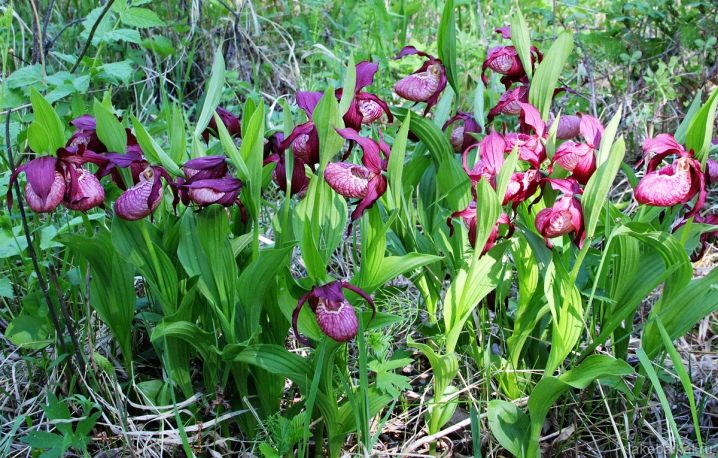
Orchid soil is not suitable for an orchid; the choice of soil for a plant should be approached thoroughly.
Even fertilized garden chernozem is not suitable for a tropical culture. The best option for planting a lady's shoe would be acid-neutral soil. As a rule, for garden flowers they create a special soil mixture of peat, humus, sand and birch rot.
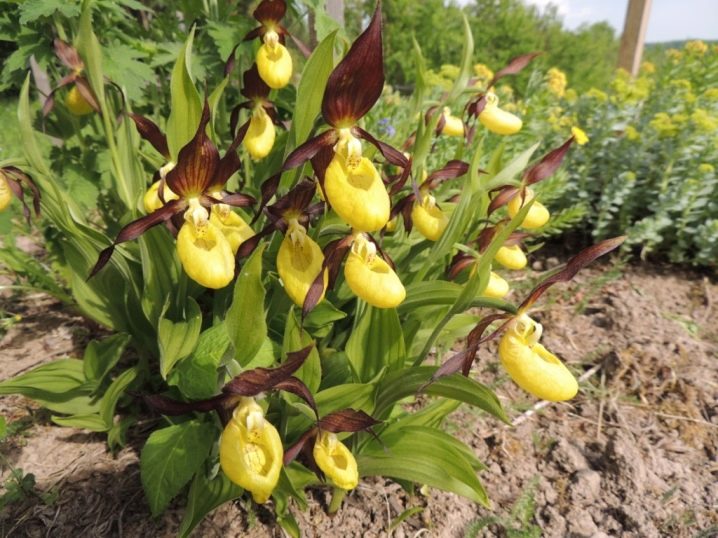
To plant and care for an orchid in the open field, it is worth choosing a shaded area for it, it is best that this is the north side. Rooting in the ground takes place in the autumn months or in the spring, before the onset of the active growth phase. Planting holes should be about 40 centimeters deep, with a width slightly exceeding the size of the rhizome. It would be more correct to drain limestone at the bottom of the hole.
After planting, the crop should be watered and the soil around it should be mulched. Moss, pine needles and foliage from garden trees are suitable for these purposes. Ferns and ground cover flowers are good neighbors for outdoor orchids. Also a good idea would be to create a monopark in the garden.
As for the cultivation of a lady's shoe indoors, the planting of the culture after acquisition is carried out in a special store substrate intended for orchids.

In the future, the plant will need to be transplanted into a new pot with a complete replacement of the earth every spring. As a rule, peat, crushed seashells, moss, and charcoal are added to the pot for productive development. The growing container should be opaque, it is best to opt for plastic options, in which the soil will dry out more slowly.

As for the volume of the lady's shoe pot, it should not be large, otherwise the culture will devote all its strength to the development of the root system, flowering in this case may not come.
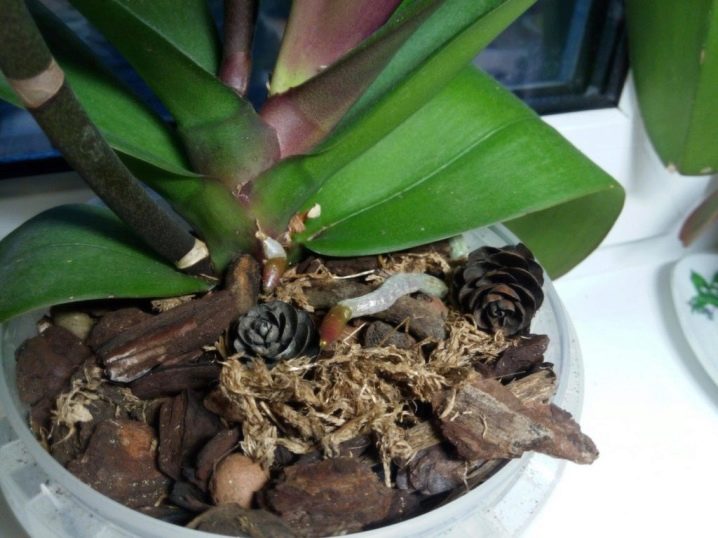
Care
Outwardly attractive, exotic flower adapts quite well to growth at home. It pleases its owners with long flowering, which, with proper care, can last from one month to a whole year.
But in order to enjoy the attractiveness of an orchid, it needs to create a microclimate that will be similar in a number of parameters to the natural habitat of the plant.
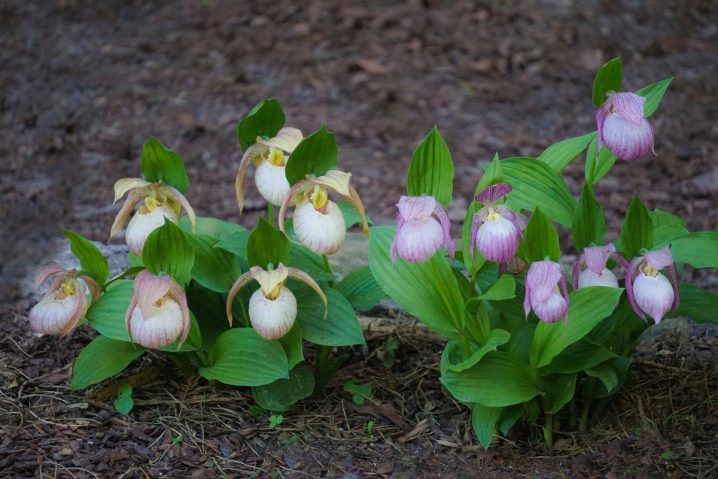
Temperature
Most varieties of the lady's shoe are not able to withstand low temperatures, therefore, in the house where this flower is grown, the temperature regime must be maintained within the range of 18-23 ° C in the winter months, 23-27 ° C in the summer. For species with wide green leaves in winter, the indoor air temperature can be reduced to 16-20 ° C, since it is the heat that negatively affects their development.

In order for the orchid to feel good at home, it should create temperature fluctuations at different times of the day, where the nighttime thermometer readings will be lower than the daytime ones.
Such changes will come in handy if necessary to help the plant bloom. Typically, the drops are about 5 degrees.
Lighting
Lighting levels and daylight hours are important for such a culture. For orchids daylight hours year-round should be at least 12-14 hours, therefore, in the winter it is worth organizing additional lighting.
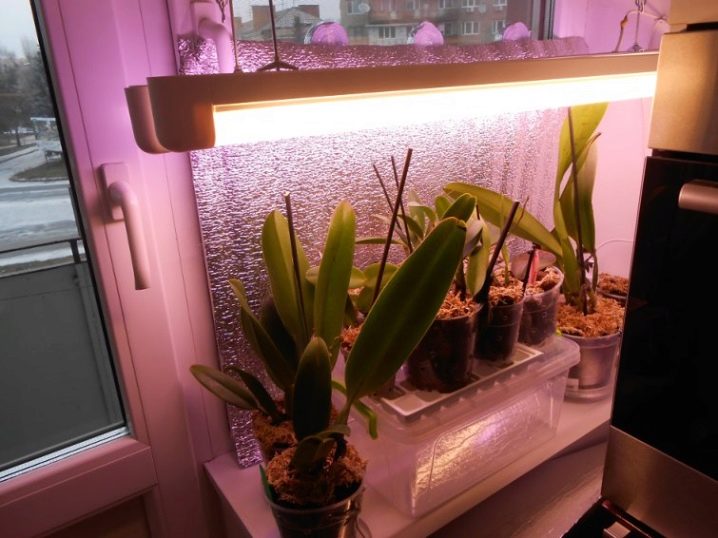
An important nuance regarding lighting is the presence of a diffused beam of rays. This result can be achieved in any room.
Avoid direct sunlight on the plant.so as not to provoke burns, especially during the summer months. To keep it healthy, you can place a shading mesh on the glass windows.
Top dressing
On the growth and development of the orchid the introduction of additional fertilizers has a positive effect. For the lady's shoe, specialized liquid nutritional formulations are available. Florists recommend feeding once a month.
When using fertilizers for flowering crops, it is worth strictly controlling the dosage, fertilizing the flower with a solution with a smaller amount of nutrients. The lady's slipper can be additionally fed with organic matter, however, the use of fertilizers of this kind should be less frequent, since a large number of them can accelerate the decomposition of the substrate in which the orchid grows.

Garden species of the lady's shoe are fed in the spring; for these purposes, mulch and mineral liquid complexes are used.
Regardless of the type of orchid, it is necessary to strictly control the dosage of the fertilizers used, since exceeding the norm can provoke the death of the culture.

Watering
The flower requires regular watering. This applies to caring for an orchid at any time of the year. You only need to use settled water to moisturize the flower, it is best that it be warm, but not hot. In the process of moistening, it is worth avoiding contact of the liquid with leaf outlets, which will rot from moisture. All drops from the leaves must be carefully removed with an absorbent material.
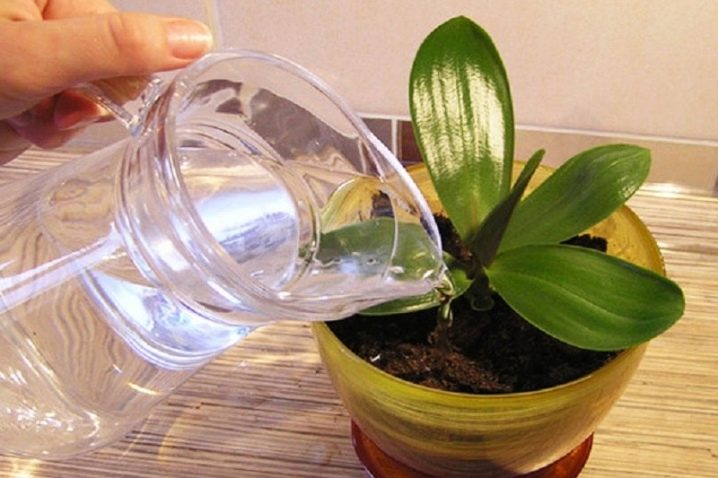
A simple and effective method for moisturizing an orchid will be immersion of a flower pot in a tray or other large container filled with water. For a lady's shoe, which is rooted in peat with bark, the optimal exposure time in water is a quarter of an hour. During this time, the substrate and roots will absorb the necessary moisture.
For a substrate containing large pieces of tree bark, the time for such a "bathing" of the flower should be extended to half an hour.
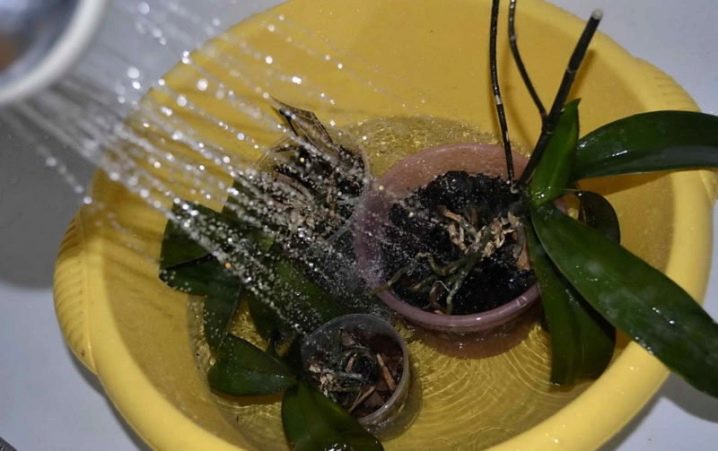
You can put the plant on the windowsill only after all the moisture has completely drained from it. You can determine the need for watering by the condition of the soil in the pot, it must be dry.
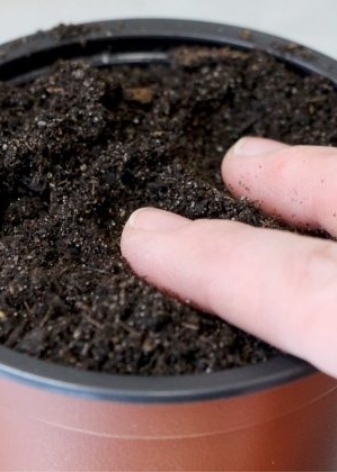
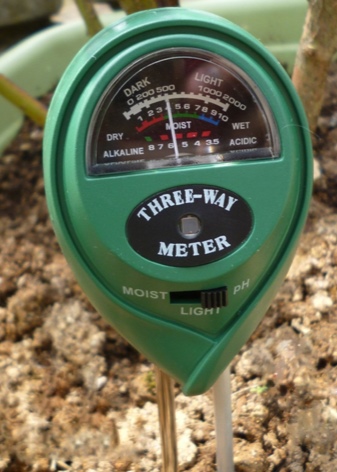
Since in the natural environment the lady's slipper grows in forests with a fairly high level of air humidity, when grown at home, it is worth providing it with conditions close to this. To achieve this result, you can use a household air humidifier, especially in the winter months, during the period of operation of centralized heating, which makes the air in the apartment dry. In addition to operating this appliance, air humidity can be increased by placing the pot with the culture in a pan filled with wet moss or expanded clay.
Moistening of a lady's shoe under growing conditions in the garden is carried out when the top layer of the earth dries up. It is necessary to water the flower regularly, but not too abundantly, since moisture lingers in the deep layers much longer, which can provoke rhizome decay.
Reproduction
The plant propagates by dividing the bush. This should be done in such a way that on each part, which will later become a new culture, there are at least two sprouts left. Such an orchid adapts faster to new conditions, and also blooms earlier. The culture is removed from the substrate and the division procedure is carried out.
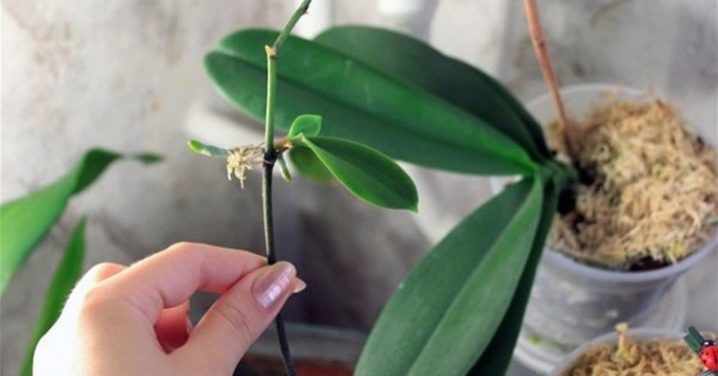
As a rule, the flower is propagated in the fall. The optimal time for this procedure will be from August to October.
The separated parts of the flower are deepened into a similar substrate for orchids. In this state, the lady's slipper should overwinter. As a rule, with the arrival of heat, new young shoots begin to grow from the rhizome.
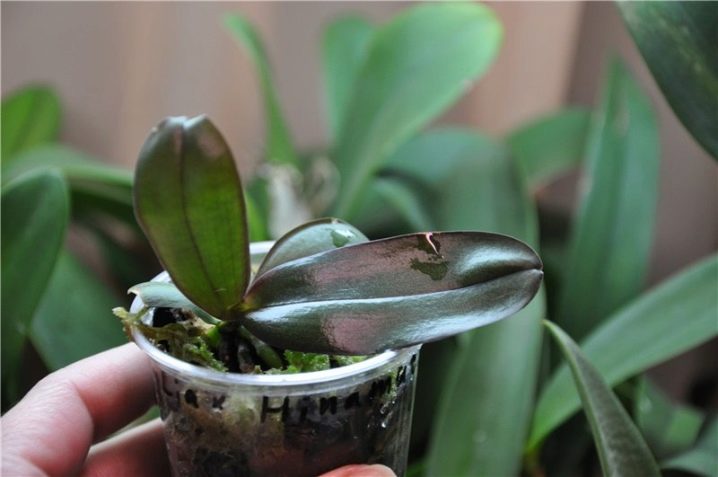
In the same way, the garden culture propagates, but in order to maintain the viability of the separated part, it should be additionally cover with a layer of dry foliage or polystyrene mulch.
See below for more details.































The comment was sent successfully.